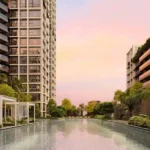The roof transportation accessory market has experienced significant technological advancement, evolving from simplistic load supports into sophisticated engineered systems optimizing aerodynamics, load security, and vehicle integration. Market analysis indicates premium systems now incorporate over 15 patents per design addressing noise reduction, fuel efficiency, and security enhancements. Understanding roof bars requires examining their technical characteristics, compatibility factors, and performance specifications beyond simple price comparisons or brand preferences. This comprehensive examination provides detailed insights into the engineering principles, material science, and design considerations that distinguish quality systems from inferior alternatives—guiding purchasing decisions through technical understanding rather than marketing claims and helping consumers evaluate critical factors frequently overlooked during the selection process.
Material Engineering Fundamentals
Aluminum alloy composition dramatically impacts performance characteristics beyond simple weight metrics. Budget systems typically utilize 6063-T5 aluminum with tensile strength around 27,000 psi, while premium bars employ 6061-T6 alloys delivering approximately 45,000 psi tensile strength. This fundamental material difference allows high-end systems to utilize thinner wall sections while maintaining equivalent load ratings—reducing weight and aerodynamic profile simultaneously.
Extrusion design complexity reveals significant engineering investment. Basic systems feature simple oval or rectangular profiles, while advanced designs incorporate internal structural webbing creating multiple chambers within seemingly simple external shapes. These multi-chamber designs dramatically increase torsional rigidity (typically 35-60% improvement) without corresponding weight increases, allowing bars to resist twisting forces during off-center loading conditions.
Finish quality extends beyond mere aesthetics to significant functional impact. Standard anodizing typically measures 10-15 microns thickness, providing basic corrosion protection suitable for occasional use. Premium systems utilize deep anodizing processes (20-25 microns minimum) often supplemented with secondary sealants, extending effective lifespan from approximately 5-7 years to 12-15+ years under identical usage conditions.
Aerodynamic Design Evolution
Cross-sectional profiles have evolved through sophisticated computational fluid dynamics modeling. Traditional square or round bars create significant turbulence through flow separation occurring immediately behind the bar, generating both noise (typically 68-75 dB at 70mph) and drag increasing fuel consumption 7-10% at highway speeds.
Modern aerofoil designs incorporate carefully engineered trailing edge profiles that gradually return airflow to the roof surface, reducing separation turbulence by approximately 60-75%. This scientific approach dramatically reduces wind noise (typically to 58-63 dB) while improving fuel efficiency by 2-3% compared to conventional profiles—significant considering average annual mileage.
Turbulator features represent the cutting edge of noise reduction technology. These seemingly decorative ridges or patterns along the bar’s upper surface serve critical aerodynamic functions by creating microscale vortices that energize boundary layer airflow. Roof Bars This counter-intuitive approach prevents laminar flow separation by transitioning to turbulent boundary layers that remain attached longer across the bar profile, further reducing both noise and drag.
Integration and Compatibility Engineering
Mounting foot design significantly impacts overall system performance. Basic systems utilize generic clamping mechanisms adjusted through approximate measurements, while sophisticated designs employ vehicle-specific mounting kits precisely matched to roof contours and attachment points. This specificity allows optimal load transfer directly to structural elements rather than cosmetic roof panels.
Tower aerodynamics often receives less attention than crossbar profiles despite similar importance. Quality systems feature streamlined tower d











